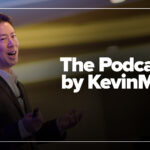I was trained to treat heart disease like a plumbing problem. Cholesterol clogs the pipes, statins clear them out. LDL goes down, we high-five each other. But what if we’ve been chasing the wrong culprit all along?
A recent Japanese study looked at 50 plaques removed during coronary atherectomy. Every single one of those plaques tested positive for Chlamydia pneumoniae by PCR or immunostaining. That’s not “some,” or “most.” That’s 100 percent.
If any other finding showed up in 100 percent of diseased arteries, we’d be tripping over ourselves to call it causative. Instead, this got a polite shrug.
This isn’t a one-off. Decades of work have found viral and bacterial DNA (herpes, CMV, Chlamydia pneumoniae) inside unstable plaques. And the correlation isn’t random: Infected plaques are more inflamed, more necrotic, and more likely to rupture. A systematic review and meta-analysis found microorganisms in a striking proportion of plaques across vascular beds. Other research has shown how viral antigen burden correlates with plaque instability and how viral particles can impair endothelial function through extracellular vesicles.
The old argument is: “Well, the antibiotic trials didn’t work.”
True. But those trials targeted the wrong patients, at the wrong time, with drugs that barely scratched the bug. Once the house is already burning, taking away the match doesn’t help.
Here’s the bigger idea:
- LDL might be the accelerant.
- But infection may be the match.
- And inflammation is the smoke we’ve been treating.
We’ve seen this movie before. Ulcers weren’t “caused” by stress or acid; until H. pylori proved otherwise. Cervical cancer wasn’t “infectious” either; until HPV changed the field. Medicine has a long history of missing microbes hiding in plain sight.
Imagine if we actually looked upstream:
- Plaque “virome” profiling as part of risk assessment.
- Antiviral or antimicrobial therapy layered on top of statins and anti-inflammatories.
- Trials in early disease, not after the damage is done.
We’ve spent 50 years polishing the lipid hypothesis. Maybe it’s time to look at the bug in the plaque.
Larry Kaskel is an internist and “lipidologist in recovery” who has been practicing medicine for more than thirty-five years. He operates a concierge practice in the Chicago area and serves on the teaching faculty at the Northwestern University Feinberg School of Medicine. In addition, he is affiliated with Northwestern Lake Forest Hospital.
Before podcasts entered mainstream culture, Dr. Kaskel hosted Lipid Luminations on ReachMD, where he produced a library of more than four hundred programs featuring leading voices in cardiology, lipidology, and preventive medicine.
He is the author of Dr. Kaskel’s Living in Wellness, Volume One: Let Food Be Thy Medicine, works that combine evidence-based medical practice with accessible strategies for improving healthspan. His current projects focus on reevaluating the cholesterol hypothesis and investigating the infectious origins of atherosclerosis. More information is available at larrykaskel.com.



















![How genetic testing redefines motherhood [PODCAST]](https://kevinmd.com/wp-content/uploads/Design-3-190x100.jpg)
![A leader's journey through profound grief and loss [PODCAST]](https://kevinmd.com/wp-content/uploads/The-Podcast-by-KevinMD-WideScreen-3000-px-4-190x100.jpg)


